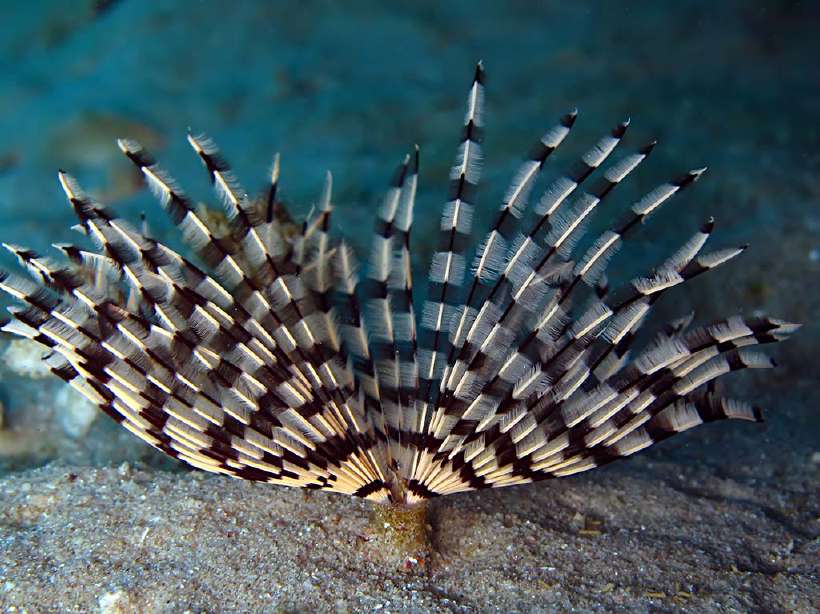What are Volcanic Tubeworms?
Home / Science for Kids / 5Ws & H For Kids / What are Volcanic Tubeworms?
In order to raise chicks the farmer keeps the eggs warm and is careful not to crush them. But when scientists in the University of Southern California rear tubeworms, they keep the immature worms very cold and under high pressure.
You would think the scientists are being cruel by subjecting these little worms to such extreme conditions. They are not.
The worms can thrive only under these circumstances, because they live in the deep sea where it is very cold. They thrive on the sulphurous vents of volcanoes at a depth of 8,000 feet in the Pacific Ocean.

The tubeworms, which resemble giant, spindly stalks of bamboo, live in clusters of millions, covering huge areas on the ocean floor. They have a thin, flexible, tube on their bodies made from secretions of a hard, mineral substance or from sand granules that provides them protection and support.
The giant tubeworm
They grow to enormous lengths; some have even been known to grow up to 10 feet in length. They have no eyes, mouths or intestines and are sustained by a scientific process known as chemosynthesis.
They do not have food as we know it. They can just make do with some chemicals seeping out of volcanic vents on the sea floor. This process of using chemicals for their body’s needs is called chemosynthesis. But, not all tubeworms show such behaviour. Some kinds gather small bits of food from the water with their tentacles.
![What are Volcanic Tubeworms? [Illustration by Shinod AP]](/media/5wh-179_1_hu8b3cb98aebc2cbd823368c16ed39a433_15019_820x0_resize_q60_box.gif)
The University of Southern California research team, headed by Professor Donal Manahan, is working towards finding out more about chemosynthesis, which is similar to photosynthesis. Instead of creating energy by absorbing sunlight, the worms absorb sulphur and other volcanic gases for their needs.
The research team also wants to find out how giant tubeworms manage to colonise volcanic vents.
A long life
Believe it or not, tubeworms are one of the longest living creatures in the world. Giant tubeworms living 1,700 feet below the surface of the Gulf of Mexico have been around for more than 250 years. Although some species of turtles live even longer, these worms are the longest living invertebrates.
Invertebrates are creatures who do not have a spinal cord. Of the thousands of animal species, which exist today, more than 95 per cent are invertebrates, ranging from corals and jellyfish to insects.
How old are you, tubeworm?
Finding out the age of a giant sea worm is not as easy as counting the rings of a tree. To determine the worms’ age, scientists travelled to the bottom of the sea in a submarine and used robotic arms to stain the tips of some tubes blue.
Three months later, they returned and measured how much each worm had grown above the stain. They repeated this process every few months for four years. Once they had these measurements, they were able to calculate how long it would have taken for the worms to grow to their present lengths.
502 words |
5 minutes
Readability:
Grade 8 (13-14 year old children)
Based on Flesch–Kincaid readability scores
Filed under: 5ws and h
Tags: #jellyfishes, #scientists, #volcanoes, #california, #giant
You may also be interested in these:
The Secrets of the Ocean Floor
Jellyfish: Fragile Creature of the Sea
Most people exhibit what political scientists call the conservatism of the peasa...
In science it often happens that scientists say, You know that's a really good a...
How Far Away are the Stars?